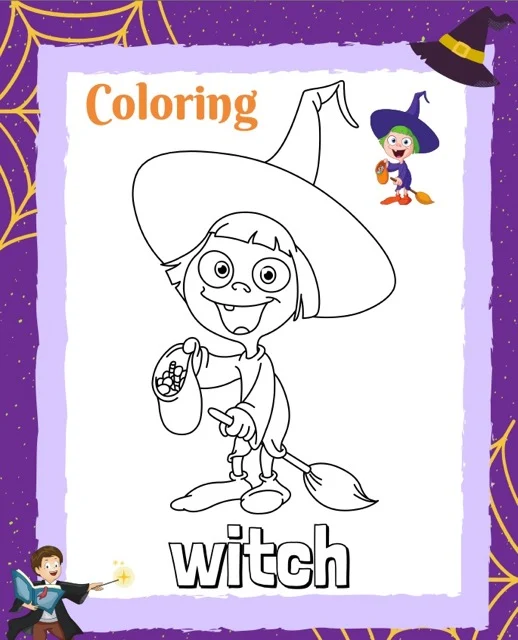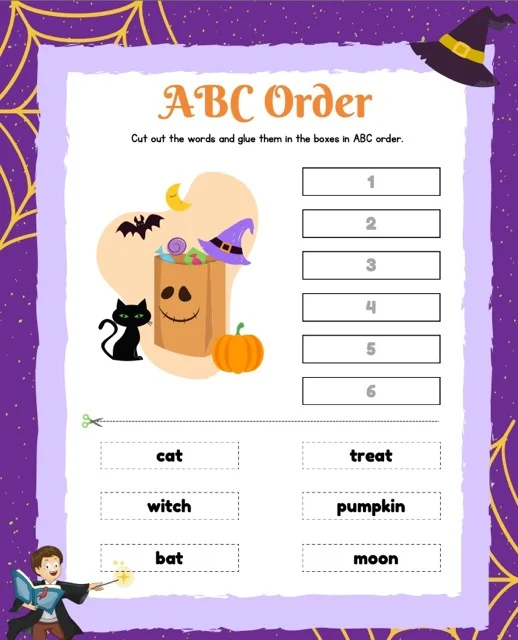Witches & Wizards Activity Pack Review
The document is a review of a "Witches & Wizards Activity Pack" designed for young learners. It emphasizes the pack's holistic approach, covering cognitive, language, fine motor, and social-emotional development through engaging, themed activities. The pack's versatility is highlighted, catering to diverse learning styles and abilities with adaptable activities. Creative expression is encouraged through imaginative play and design activities. Overall, the review promotes the pack as a fun and effective tool for early childhood education.
Witches & Wizards Activity Pack: A Holistic Learning Approach
Witches & Wizards Activity Pack: A Briefing Doc
This document reviews the "Witches & Wizards Activity Pack", analyzing its educational value and potential for engaging young learners across various domains.
Core Educational Value:
The activity pack utilizes the popular "Witches and Wizards" theme to provide a fun and engaging platform for developing crucial skills in young learners.
●
Cognitive Development:
○
Basic math concepts like counting, number recognition, shape recognition, and color identification are reinforced through themed activities. "Young learners can practice basic counting and number recognition, shape recognition, and color identification through the 'Witches and Wizards' theme."
○
Problem-solving and critical thinking skills are stimulated by mazes and jigsaw puzzles. "Mazes and jigsaw puzzles in the activity pack encourage problem-solving skills as they require learners to think critically and strategically to find solutions."
●
Language Development:
○
Vocabulary expansion is facilitated by introducing words related to witches, wizards, Halloween, and emotions. "Examples of vocabulary words related to the theme include 'witch,' 'wizard,' 'broomstick,' 'cauldron,' 'potion,' 'spell,' 'magic,' 'Halloween,' 'angry,' 'excited,' and 'scared.'"
○
Spelling practice is integrated through themed activities like spelling jigsaws.
●
Fine Motor Skills Development:
○
Activities such as coloring, tracing, and cutting out shapes refine hand-eye coordination and control. "Activities like coloring, tracing, and cutting out shapes help develop and refine fine motor skills by requiring controlled hand movements and hand-eye coordination."
●
Social-Emotional Development:
○
Activities focused on identifying and discussing emotions in witches and wizards promote emotional intelligence and self-expression. "By identifying and discussing different emotions displayed by witches and wizards, children can learn to understand and express their own feelings, thus developing social-emotional skills."
Versatility and Creative Expression:
The "Witches & Wizards Activity Pack" is adaptable to various learning styles:
●
Visual learners: Benefit from colorful illustrations and diagrams within the activities.
●
Kinesthetic learners: Engage with hands-on activities like cutting and pasting.
The pack also encourages creative expression:
●
Learners can design their own wizard hats, draw magical creatures, or even invent their own spells.
●
The theme can be extended into imaginative play, storytelling, and dramatic performances, deepening engagement and exploration. "The theme can be extended into imaginative play by encouraging children to act out scenes as witches and wizards, creating their own magical worlds and scenarios."
Adaptability for Diverse Learners:
The activity pack can be adapted for learners with different abilities and learning styles by:
●
Adjusting the complexity of the activities.
●
Offering alternative ways to complete tasks (e.g., using verbal responses instead of written ones).
●
Providing additional support materials or tools.
Overall Impact:
The "Witches & Wizards Activity Pack" offers a holistic learning experience by:
●
Integrating multiple learning domains (cognitive, language, social-emotional, and physical).
●
Fostering imagination and creativity.
●
Providing opportunities for differentiated instruction.
This theme-based approach is highly effective in early childhood education as it taps into children's natural curiosity and imagination, making learning a fun and engaging experience.
Witches & Wizards Activity Pack
Witches and Wizards Activities: An FAQ
What basic concepts can young learners practice with this theme?
This activity pack helps young learners practice basic counting and number recognition, shape recognition, and color identification.
What language skills can be developed?
This theme provides opportunities to practice vocabulary related to witches, wizards, Halloween, and emotions. Learners can also practice spelling common theme-related words.
How can fine motor skills be incorporated?
Activities such as coloring, tracing, and cutting out shapes can help develop and refine fine motor skills.
What kind of problem-solving activities are included?
The activity pack includes mazes and jigsaw puzzles, which can help learners practice problem-solving and critical thinking skills.
How can these activities be adapted for different learning styles?
The variety of activities in this pack caters to different learning styles. Visual learners benefit from colorful illustrations and diagrams, while kinesthetic learners can engage in activities like cutting and pasting.
Can these activities be used to teach social-emotional skills?
Yes, activities like identifying and discussing different emotions in witches and wizards can help children understand and express their own feelings.
Are there opportunities for creative expression within this theme?
Learners can express their creativity by designing their own wizard hats, drawing magical creatures, or creating their own spells.
How can these activities be extended beyond the workbook?
These activities can be extended into imaginative play, storytelling, and even dramatic performances, allowing children to further explore the world of witches and wizards.
Witches & Wizards Activity Pack Study Guide
Witches & Wizards: A Study Guide
Short-Answer Quiz
Instructions: Answer each question in 2-3 sentences.
1.
What basic mathematical concepts can young learners practice with the "Witches and Wizards" theme?
2.
List three examples of vocabulary words related to the "Witches and Wizards" theme.
3.
How do the activities in the pack promote the development of fine motor skills?
4.
Which activities within the pack specifically encourage problem-solving skills?
5.
How does the activity pack cater to visual learners?
6.
Explain how the "Witches and Wizards" theme can be used to teach social-emotional skills.
7.
Give two examples of how learners can express their creativity through the "Witches and Wizards" theme.
8.
Suggest one way to extend the "Witches and Wizards" activities beyond the workbook and into imaginative play.
9.
What type of maze is featured in the activity pack?
10.
Besides cutting, what other method can be used to enhance fine motor skills when using the "Witches and Wizards" activity pack?
Answer Key
1.
Young learners can practice basic counting and number recognition, shape recognition, and color identification through the "Witches and Wizards" theme.
2.
Examples of vocabulary words related to the theme include "witch," "wizard," "broomstick," "cauldron," "potion," "spell," "magic," "Halloween," "angry," "excited," and "scared."
3.
Activities like coloring, tracing, and cutting out shapes help develop and refine fine motor skills by requiring controlled hand movements and hand-eye coordination.
4.
Mazes and jigsaw puzzles in the activity pack encourage problem-solving skills as they require learners to think critically and strategically to find solutions.
5.
The activity pack caters to visual learners through the use of colorful illustrations, diagrams, and visually engaging activities that help them understand and process information.
6.
By identifying and discussing different emotions displayed by witches and wizards, children can learn to understand and express their own feelings, thus developing social-emotional skills.
7.
Learners can express creativity by designing their own wizard hats, drawing magical creatures, inventing spells, writing stories, or creating potions.
8.
The theme can be extended into imaginative play by encouraging children to act out scenes as witches and wizards, creating their own magical worlds and scenarios.
9.
A potion maze and a wizard school maze are featured in the activity pack.
10.
Tracing activities included in the "Witches and Wizards" activity pack can be utilized to enhance fine motor skills.
Essay Questions
1.
Analyze how the "Witches and Wizards" activity pack effectively integrates multiple learning domains (cognitive, language, social-emotional, and physical) to provide a holistic learning experience for young learners.
2.
Discuss the importance of incorporating themes like "Witches and Wizards" into early childhood education. How do such themes contribute to a child's overall development and learning?
3.
Evaluate the role of creative expression in the "Witches and Wizards" activity pack. Explain how these activities foster imagination and creativity in young learners.
4.
Explain how educators can adapt the "Witches and Wizards" activities to meet the needs of diverse learners, including those with different learning styles and abilities.
5.
Design an extended learning experience based on the "Witches and Wizards" theme. Describe the activities, materials, and learning objectives for this extended experience.
Glossary of Key Terms
Color Identification: The ability to recognize and name different colors.
Counting: The process of determining the number of objects in a set.
Fine Motor Skills: The ability to make precise movements using the small muscles of the hands and fingers.
Jigsaw Puzzle: A puzzle consisting of numerous pieces that fit together to form a complete picture.
Kinesthetic Learners: Individuals who learn best through physical activity and hands-on experiences.
Maze: A puzzle consisting of a complex network of paths, typically with only one correct route to reach the destination.
Number Recognition: The ability to identify and name numerals.
Problem-Solving: The process of finding solutions to challenging or complex issues.
Shape Recognition: The ability to identify and name different geometric shapes.
Social-Emotional Skills: Abilities that help individuals understand and manage their emotions, build relationships, and make responsible decisions.
Tracing: The act of copying a design or pattern by following its outline.
Visual Learners: Individuals who learn best through visual aids, such as pictures, diagrams, and demonstrations.




























